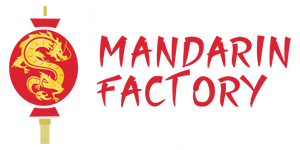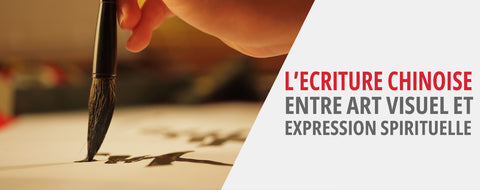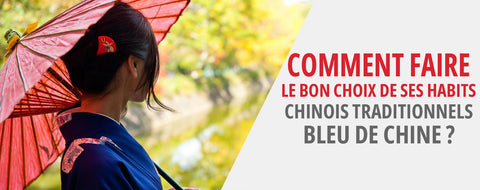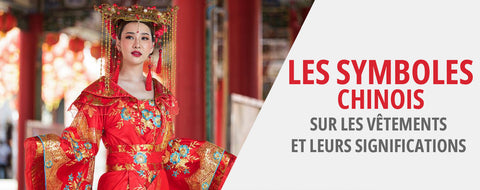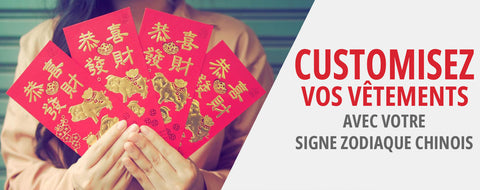
The Art of Chinese Embroidery
reading - words
Chinese embroidery is one of the many traditional chinese crafts. We don't necessarily suspect it when we see it, and yet, it has a very long history behind it. In Antiquity, the chinese women had to learn the technique of embroidery from a young age, so that they could later take care of the household.
Embroidery was first developed by women to decorate their clothes, costumes, pockets and bedding. These ladies were very inspired, especially by the nature around them, and the themes of traditional Chinese embroidery were mainly the flowers and the birds. With its vibrant and colorful patterns, it has gradually developed into a real national art ! But the history of silk is far from stopping at the homes of Chinese families, because the important production of silk from China has favored the development of the art of embroidery and brocade throughout the world, in addition to drastically changing thehistory of china !
Through this article, we will teach you more about this magnificent art that is Chinese embroidery, and in particular about its very ancient history and the different schools of Chinese embroidery.
The History of Chinese Embroidery
THE silkworms were domesticated 5000 years ago in China! silk, in the form of textiles and embroidery, was the main product transported along the ancient Chinese Silk Road. As small as they are, silkworms have therefore helped to write world history!
The production of silk threads and fabrics gave birth to the art of embroidery. Embroidery existed before the invention of silk, but in a more primitive form, and was usually worked on wool, linen and hemp fabrics, and this from the Neolithic period. As we can see, fabric has made its way into Chinese history. Moreover, the most old fabric found in China which dates from the Shang dynasty (618-907)!
It was only later, with the development of the national economy, that embroidery entered the lives of ordinary people. Thanks to the progress of the Zhou Dynasty, the Han Dynasty saw a leap forward in embroidery, both in terms of technical that of artistic styleThe drawings covered a wide range of subjects: the sun, moon, stars, mountains, flowers, grass, clouds, tigers, dragons, phoenix and geometric patterns, also auspicious words.
At that time, embroidery symbolized the social status, and was reserved for the upper echelons of society. Embroidery products from high quality were therefore intended for noble needs such as tapestry. The common people could not afford high-quality embroidery products, so they could have only a little embroidery to adorn their daily clothes, as it was considered a display of luxury.

Tang Dynasty (618-907)
Later, during the Tang Dynasty (618-906), the Buddhism Being in full swing, embroidery was widely used to pay homage to Buddha. Buddhist portraits were popular at that time, and people liked to use this noble art to pay homage to the one they venerated.
The embroidery was rather intended for a daily use And decorative and chain stitch was then the main stitch method. But then cross stitch became popular and the colors of the threads could be gradually changed. This made the embroidery designs even more splendid and richer! Thanks to cross stitch, the embroiderers could freely develop and work on their ideas in an artistic way, and this point therefore contributed to the development of embroidery creativity.
Song Dynasty (960-1279)
Song embroidery (960-1279) was inspired by religious portraits very fashionable, and evolved into portraits of personalities. It reached new heights in terms of both quality and quantity! It then became an art form in its own right, often drawing inspiration from calligraphy and paintThis art, driven by its popularity, allowed the development of new tools and skills, and flourished throughout China.
Song embroidery has therefore considerably improved several embroidery stitches, and especially straight stitches. In addition, the drawing of lines and the colors used were completely revolutionized at this time. But it is not only in its appearance that Chinese embroidery was renewed at this time, because we also note many new tools that made their entrance. This is particularly the case of fine steel needles as well as much finer silk threads. Embroidery thus reached its creative, technical and economic prosperity during the Song dynasty. It then combined art, painting and calligraphy inspired by famous paintings.
During this period, the art of embroidery reached its peak. The vivid and detailed images were realistic. Embroidery was then divided into two functions: art for daily use and art for art's sake.

Yuan Dynasty (1280-1368)
The rulers of the Yuan dynasty retained the use of embroidery for religious purposes, but this time turned to the lamaism which was then more in vogue. In addition to the traditional clothing, embroidery was then used to decorate Buddha statues and sutras and prayer flags.
Ming Dynasty (1368-1644)
With the opening of trade in the Ming, crafts and many industries flourished. Embroidery then became more accessible, because we were trying to sell more of it, and it then became perfectly integrated into popular culture! However, even by being more accessible and cheaper, it has continued to excel. The quality of embroidery and materials used in daily life has indeed improved further! During the Ming Dynasty, the SKILLS Embroiderers were then highlighted and appreciated, and real workers were recognized for their art! The scope of art embroidery then expanded to paper embroidery, needle embroidery, thread embroidery, metallic silk embroidery, etc.
Qing Dynasty (1644-1921)
The nation was peaceful and the economy was booming in the middle of the Qing Dynasty. So Qing embroidery continued to develop develop in a wide range of embroidery and themes. The Qing dynasty therefore marked a turning point for the art of embroidery, which, while inheriting the tradition and keeping a know-how impeccable, has been modernized by drawing inspiration from new elements of Japanese embroidery and even Western art.
Throughout this history, many Chinese embroidery stitches, which are still used in the West today, have developed:
- The knot point
- The stem stitch
- Cross stitch
- The chain stitch
- The back stitch
- The blanket stitch
The four schools of Chinese embroidery
The adoption of different needling methods has given rise to different chinese embroidery styles and different technical schools throughout history. The four most famous styles of Chinese embroidery are Su embroidery from Jiangsu province, Xiang embroidery from Hunan province, Yue embroidery from Guangdong province, and Shu embroidery from Sichuan Province.
The Su Embroidery
Su embroidery has a history of more than 2000 years. Su is the abbreviated name of Suzhou. A typical water town in southern China. Suzhou and everything that comes from it reflects tranquility, refinement and elegance… Just like Su embroidery!
Favored by a privileged climate, Suzhou and its surrounding areas are conducive to silk cultivation. As early as the Song Dynasty, Su embroidery was already well known for its elegance and his finesse. In the Ming Dynasty, influenced by the Wu school of painting, it began to rival painting and calligraphy in its art. Su embroidery is known for its delicacy and its elegance. The design is generally very simple, with the main theme being light. Its seams are smooth, fine, regular, delicate and harmonious. The fine embroidery thread is divided into a maximum of 48 strands, barely visible to the naked eye!
The art of Su embroidery traditionally features birds and flowers, nature scenes and ancient Chinese paintings. During the different dynasties, the themes Suzhou embroidery styles developed to suit the tastes of the times. From the Tang Dynasty (618-907 AD) to the Qing Dynasty (1644-1912), birds such as peacocks, ducks, and the mythical phoenix were popular embroidery motifs. Flowers combined with butterflies, dragonflies, and bees were also popular, as were koi carp, galloping horses, and tigers. With increasing contact with the West and its artistic styles, Su embroideries adopted many of these portrait and oil painting techniques. Today, it is not uncommon to see embroidery of impressionist paintings, realistic portraits, or contemporary oriental art in Suzhou.
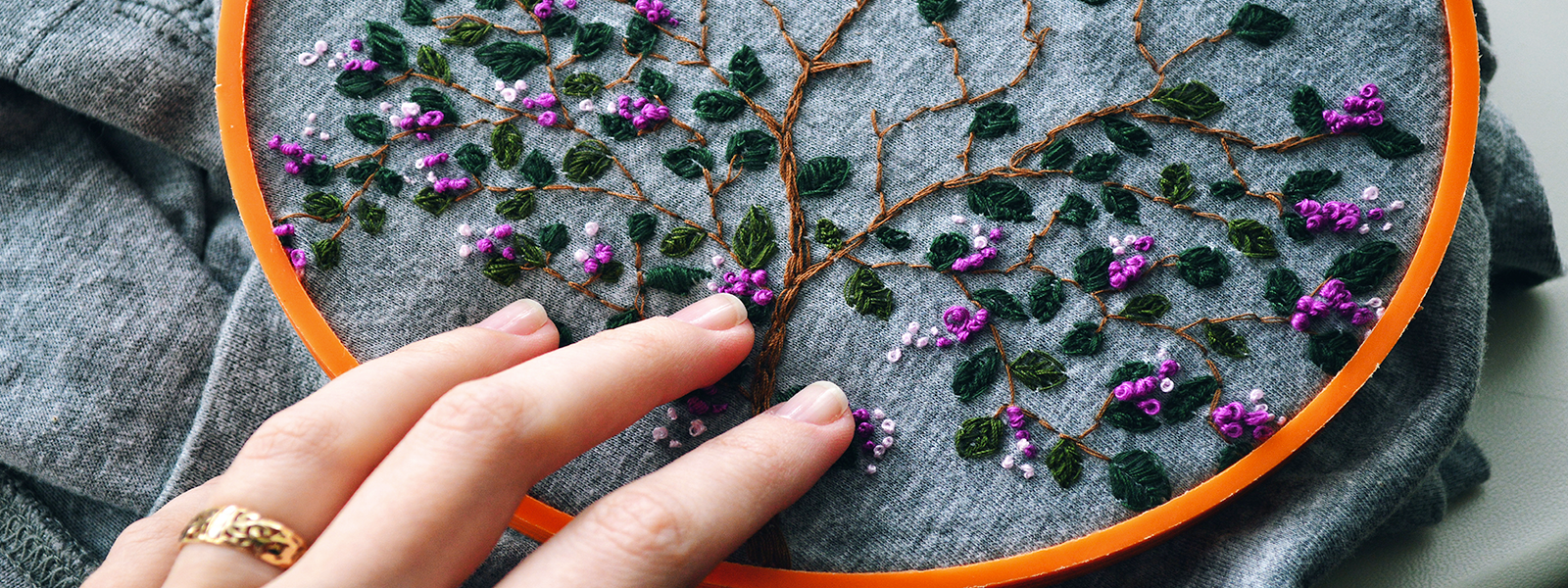
What also characterizes Su embroidery is the double sided embroidery, where a single image can be seen on each side of a piece or even different images on each side! Double-sided embroidery is the most complex and elaborate of all embroidery methods. A fine gauze or almost transparent silk fabric is used and the artist must first plan the design and stitching techniques carefully before starting a piece. A true chinese puzzle ! This is why double-sided embroidery is undoubtedly the quintessence of Su embroidery as an art.
Su embroidery products were sent to participate in theUniversal Exhibition in 1915. Since then, the style has become increasingly famous around the world.
Xiang Embroidery
Xiang embroidery was initiated during the Warring States Kingdom of Chu. It became the main craft in the vicinity of Changsha, the capital of the province of Hunan. In the Qing Dynasty, Xiang embroidery was developed from the methods of folk embroidery from Hunan, but it also drew on the skills of Su embroidery and Yue embroidery. It has a history of more than 2,000 years.
Xiang's products use embroidery threads colorful loose to embroider the embroidery pattern and the stitches are not as neat as those of other embroidery styles. The different colored threads are mixed together, which can achieve a change of progressive color with a tone rich And harmoniousXiang embroidery emphasizes realism, simplicity and grace, vivid subject, combination of virtual and real structure, and ingeniously integrates traditional Chinese painting, poetry, calligraphy and stone art.
Xiang embroidery patterns are mainly derived from traditional Chinese paintings of landscapes, human figures, flowers, birds and animals. Always inspired by the nature, the most common patterns of Xiang embroidery are lions and tigers. Xiang embroidery is mainly made of pure silk, satin, transparent thread and various colors of velvet. Its composition is rigorous and its color is bright.
Xiang embroidery won the best prize at the Turin World's Fair in Italy in 1912 and the first prize at the Panama World's Fair in 1933. Xiang embroidery has formed its own unique style in the long-term development process. Its works have high traditional craft value and regional cultural and artistic value. It has become the "art card" of Hunan and even China!

Yue Embroidery
Yue embroidery was fully developed in the Tang Dynasty. Ancient Chinese craftsmen used peacock feathers twisted together like a strand of embroidery thread to sew the ornamental patterns. It is not for nothing that this type of embroidery is known for its extreme finesse! The patterns of Yue embroidery are rich and complex in content, with bright colors and strong decorative effects. Portraiture, flowers and birds are the most popular themes because the subtropical climate favors the region with an abundance of these plants that are rarely seen in central China. In addition, she uses rich colors for strong contrast and a beautiful, lively effect.
Shu Embroidery
Originating from Shu, the diminutive of Sichuan, Shu embroidery is characterized by a style refined And lively. It is largely influenced by its geographical environment and the local customs of Sichuan. The earliest records of Shu embroidery date back to the Western Han Dynasty. At that time, embroidered products were a luxury enjoyed only by the royal family and were strictly controlled by the government. During the Han Dynasty and the Three Kingdoms, Shu embroidery was so valuable that it was even traded for horses or used to settle debts!
Shu embroidery products are mainly found in Chengdu, the capital of Chengdu province. Sichuan. They are made with soft satins and colored threads. The different embroidery methods form a unique local style. Its craftsmanship is remarkable, with more than 100 kinds of unique stitches! The patterns of Shu embroidery include flowers, birds, landscapes, fish, worms and human figures.
Now you know everything about the world of embroidery! If you enjoyed this article, we invite you to discover more about the fascinating world of Chinese embroidery by browsing our shop, where you will find many clothes embroidered with traditional Chinese know-how.
